The Olive Ridley Turtle
Olive ridley turtles, also known as the Pacific ridley sea turtle, is a vulnerable species according to the International Union for Conservation of Nature (IUCN) Red List. It is found in warm and tropical waters, primarily in the Pacific and Indian Oceans.
I started documenting it when I came to know about the Chennai-based Students Sea Turtle Conservation Network (SSTCN), which collects the eggs, keeps them in hatcheries and releases the hatchlings to the sea. These hatchlings have a survival ratio of one in a thousand. After mindless ‘development’ in the coastal areas by the government, this ratio has dwindled further as the turtles and hatchlings come to the shore after getting attracted from the lights source such as mast lights and fall prey to dogs, crows and humans for food. They are also sometimes run over by vehicles or get caught in coastal vegetation, garbage or fishing nets.
Sea turtles play an important role in protecting the marine ecosystem by eating the sea grass. Like normal lawn grass, sea grass needs to be constantly cut short in order to keep healthy. The beds of healthy sea grass are essential for breeding and are developmental grounds for many species of fish and other marine life.
Across the world, turtles, because of their longevity and stability, are an important part of the mythology. Culturally, they are also often associated with myths of the origin of the Earth. In popular culture, sea turtles are large animals with widespread popular appeal and are often used as symbols of the marine environment and environmentalism by the activists.
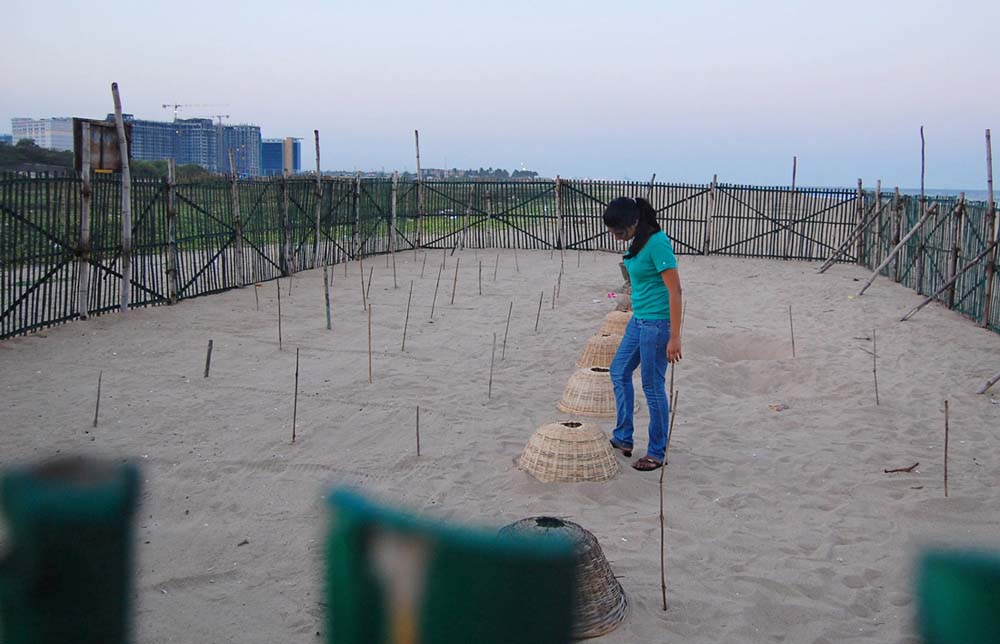 SSTCN volunteer checks the eggs kept in the safe place in the hatchery.
SSTCN volunteer checks the eggs kept in the safe place in the hatchery.
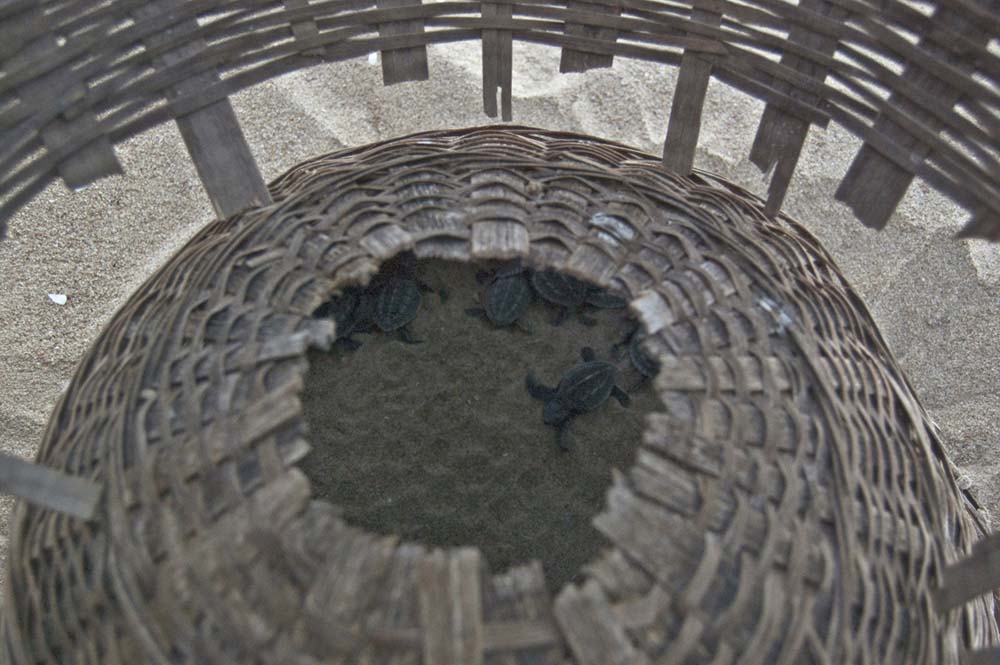
Newly born hatchlings.

The olive ridley is most noted for its massive nesting aggregations, with literally thousands of females nesting in large scale.
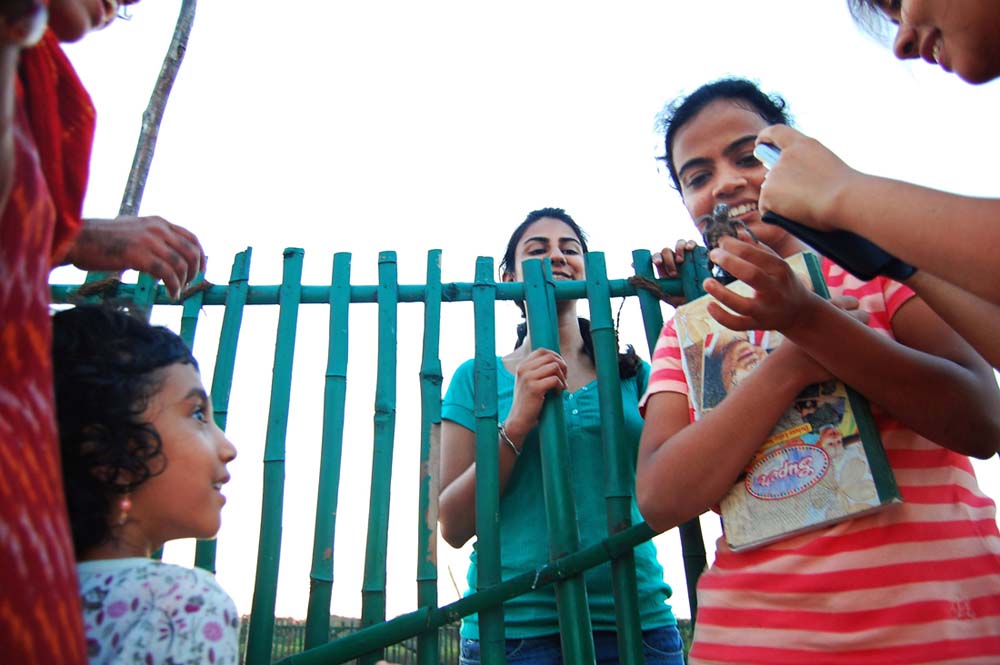
In the Indian Ocean, it nests in great abundance in eastern India and Sri Lanka.
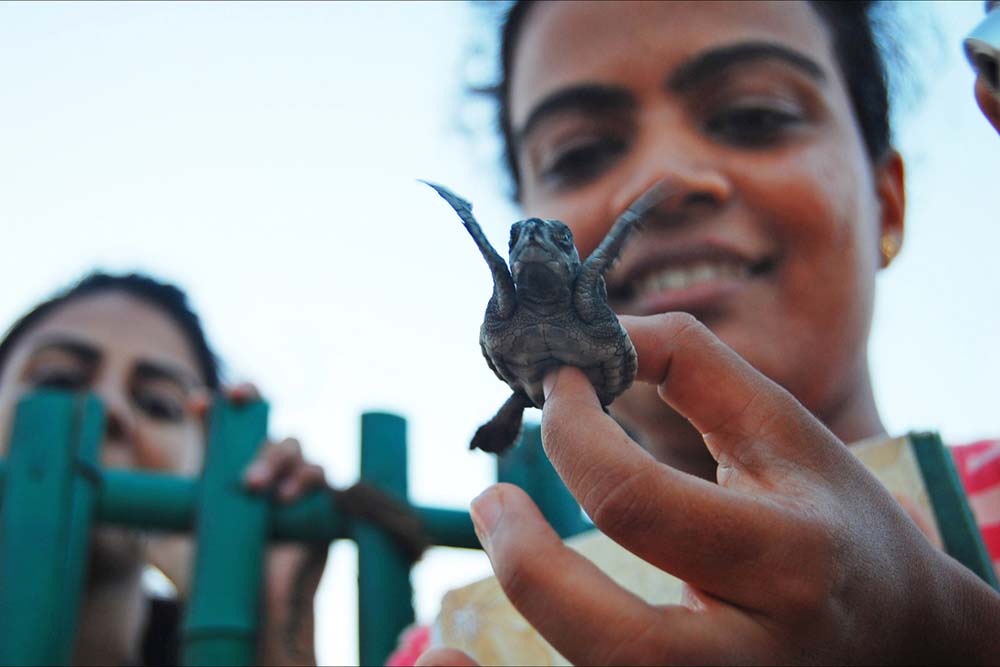 The Olive Ridley Turtles are an endangered species.
The Olive Ridley Turtles are an endangered species.

The survival chances of these hatchlings is one in 1000.
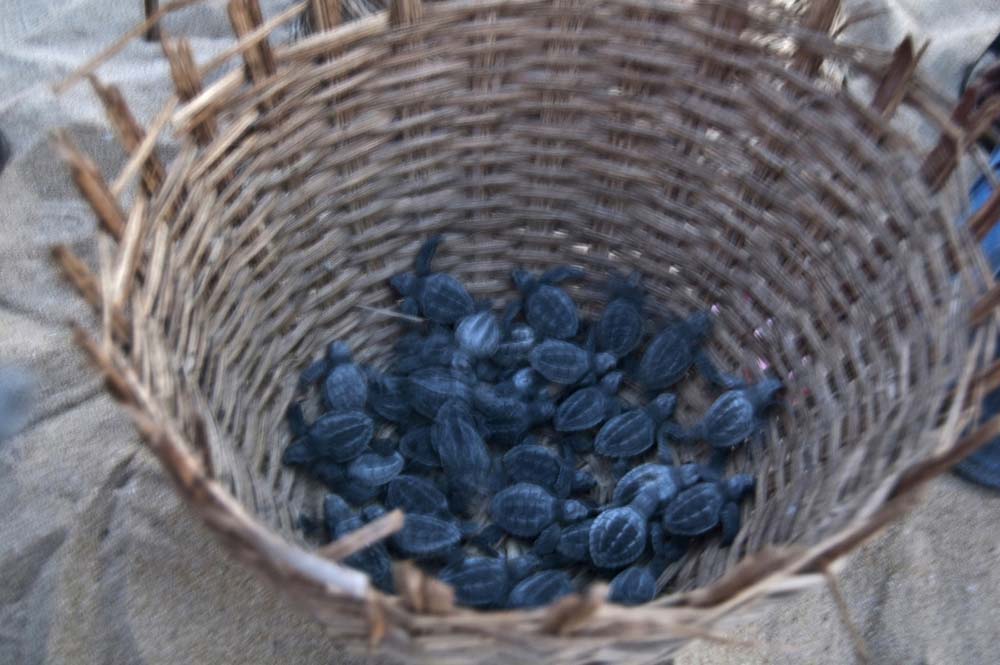
The threat is mainly posed by by trawlers, pollutions, lights along the beaches and erosion of the beaches.
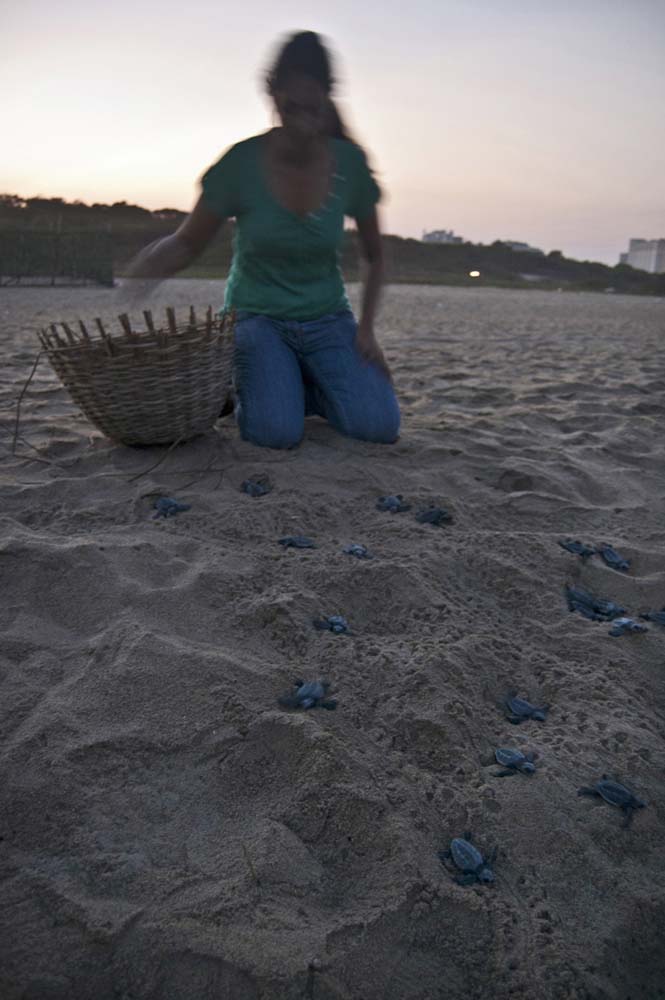
Hatchlings are released during the sunset as after emerging out of their nests they move towards brighter horizon.
 Those hatchlings which cannot find sea because of lights from high-mask are directed towards sea by using a flash light.
Those hatchlings which cannot find sea because of lights from high-mask are directed towards sea by using a flash light.
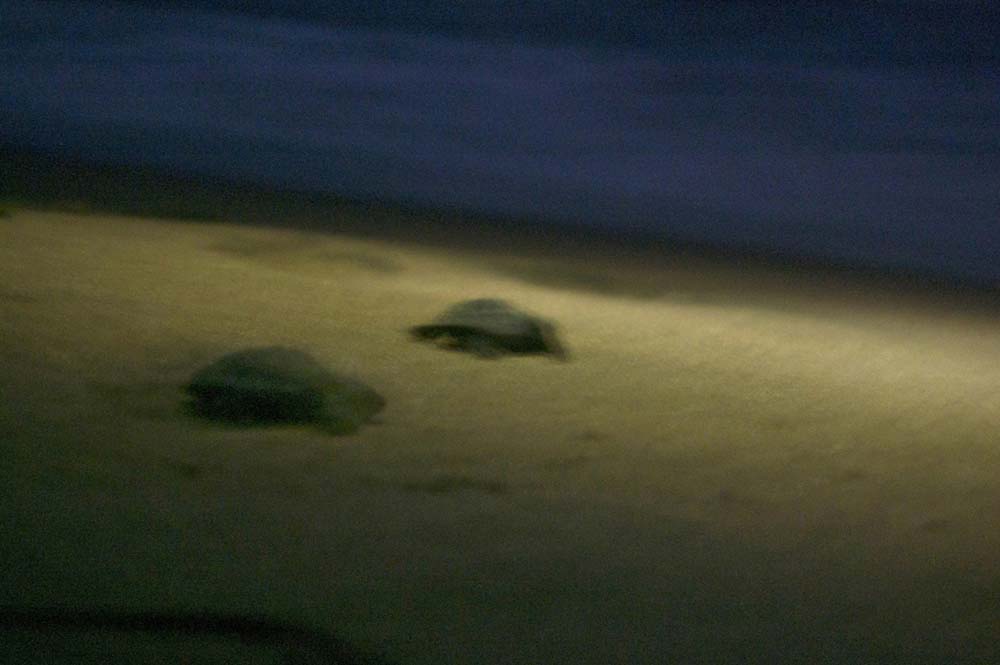
Hatchling following flashlight and approaching sea.
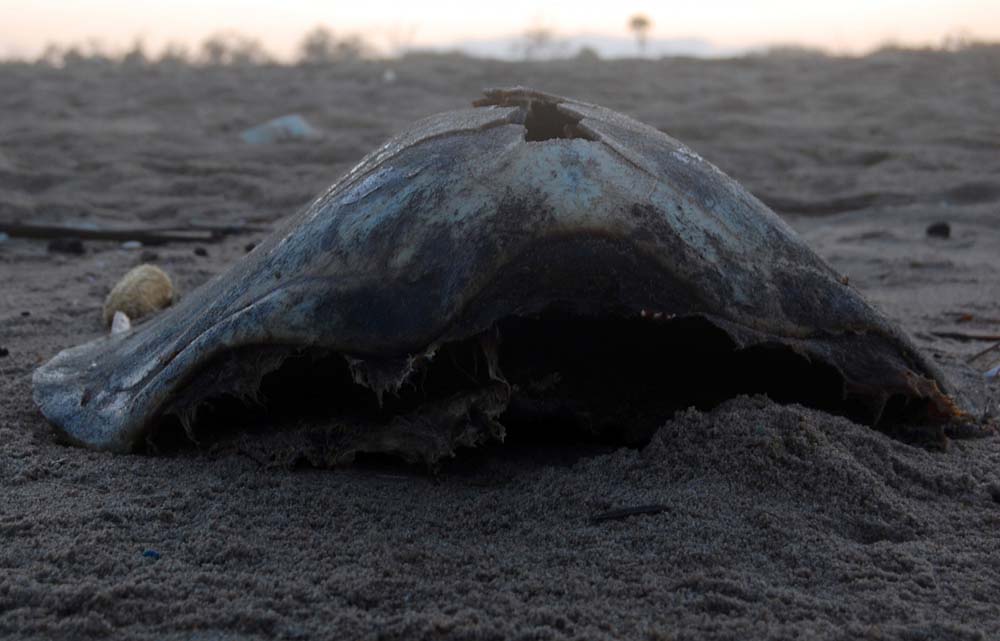
Shell of an adult Olive Ridley turtle which was killed by propellor of boat or trawler.
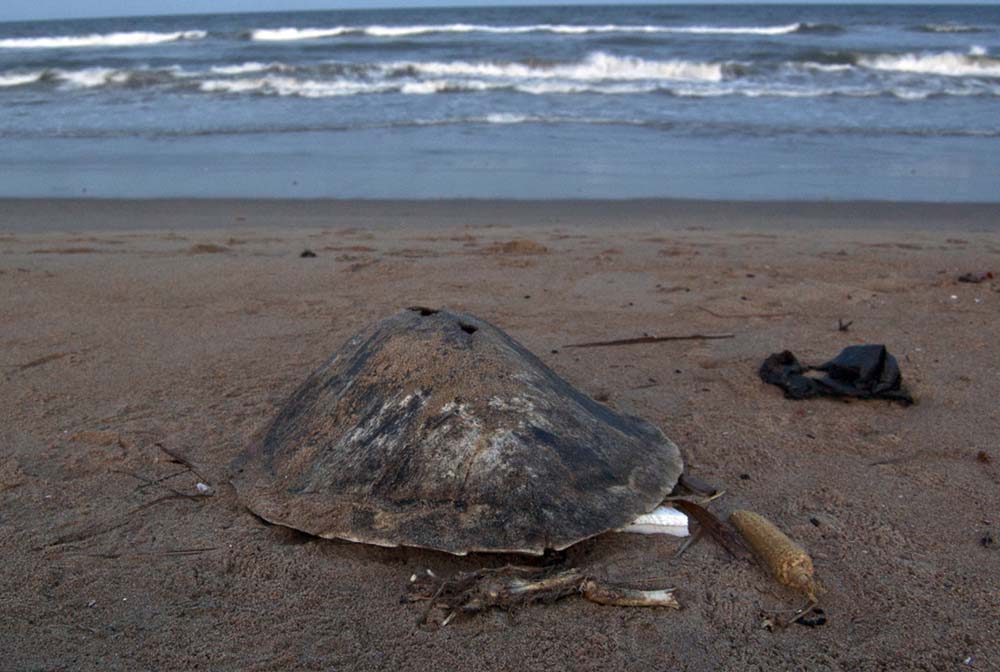
Sea Turtles are an important part of the marine ecosystems we can’t really let them die of unnatural death due to the human interventions.